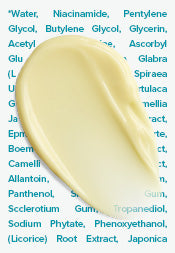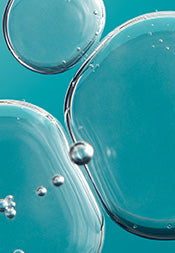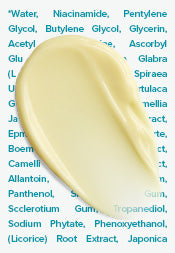What is Skin’s Microbiome and Why Does it Matter
The skin’s microbiome, or as some people refer to it “skin flora,” is made up of a unique collection of microorganisms that greatly impact how skin looks and feels. This invisible eco-system has become a hot topic in skincare, both in Singapore and beyond, as an explosion of new research has revealed the importance of keeping the skin’s microbiome in check. This greatly helps to effectively ward off negative factors that would otherwise deteriorate skin’s appearance or worsen existing skin concerns.
Understanding how the pieces of the skin microbiome fit together will help you find products that can help.
Skin Flora (How Pre-, Pro-, And Postbiotics Work Together)
Skin’s microbiome is made up of “good” and “bad” microbes that live on its surface. Surprisingly, you need both types to have healthier, more vibrant skin so the goal is to create a healthy balance. In doing so, the good bacteria on skin can flourish without letting the resident bad bacteria overtake it. This balance allows skin to better protect itself from harmful invaders.
- Probiotics are living microbes that exist on the skin, playing a crucial role in stabilising the microbiome.
- Prebiotics are substances on the skin that help feed and encourage the growth and healthy balance of probiotics.
- Postbiotics are the byproducts (new beneficial substances) that probiotics generate as they break down on and within the skin's surface. Postbiotics help facilitate an optimal skin flora and maintain effective moisture balance plus strengthen the skin’s barrier against environmental stressors.
While probiotics get most of the attention, prebiotics and postbiotics play an equally (if not, more so) vital role in skin microbiome.
How To Improve Skin Microbiome
Skin’s microbiome can easily become unstable from a number of internal or external factors including pollution, sun damage, and irritating skincare products. To a certain extent, you can take measures to protect yourself from some of these factors—but it’s impossible to rule them out completely. That’s where skincare can help.
Balancing your skin’s microbiome takes a combination of pre-, pro-, and postbiotic ingredients. It’s important to find microbiome skincare that combines these three elements to see real results.
When balanced, the bad and good bacteria on the skin keep each other in check, working together to create postbiotics, which include peptides, proteins, amino acids, enzymes, hyaluronic acid, lactic acid, ceramides, antioxidants, and other substances that are vitally important for skin .
The results you’ll see and feel:
- Skin is better able to protect itself against environmental stressors.
- Hydration levels are optimised and maintained.
- Sensitised, reddened skin becomes more stable and calmer.
- Skin issues diminish thanks to the restoration of a healthy pH balance.
Why Not Just Any “Microbiome Skincare” Will Do
A lot of products claiming to balance the skin’s microbiome rely on probiotics alone, but that’s shortsighted. As we mentioned above, it takes a combination of pre-, pro-, and postbiotics to get results. Just applying probiotics by themselves can’t balance your microbiome because everyone has a different, ever-changing microbiome. That means no product or blend of probiotics (and there are many) can fit exactly what one’s skin needs . Even if everyone had the exact same microbiome, how would any skincare product know which microbes on your skin are out of balance?
This delicate balance is really about the environment that pre-, pro-, and postbiotics create together to help your skin protect itself naturally.
Another important consideration for skincare is the packaging. These delicate formulas are very fragile and can deteriorate easily in the wrong type of packaging. That means no jar packaging (air and light exposure cause them to break down faster). The bottom line: microbiome skincare is much more than a fad—it truly can help improve skin in a number of ways when you find the right formula.
Shop our best selling formulas to give you glowing skin.
References for this information
Nature Reviews Microbiology, March 2018, pages 143-155
Experimental Dermatology, September 2019, ePublication
Fermentation, May 2019, pages 1-17
International Journal of Molecular Science, September 2019, ePublication
Trends in Food Science & Technology, May 2018, pages 105-114
World Allergy Organization Journal, August 2017, ePublication












